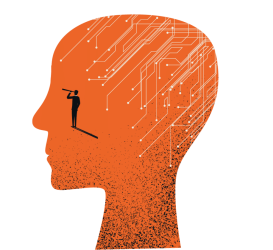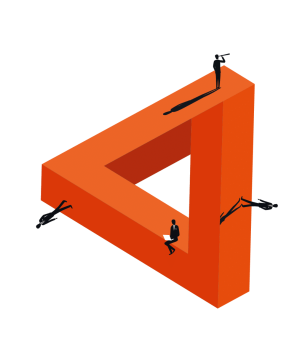The CX Hot Six for Telecoms
A guide to customer experience technology that delivers on business KPIs
How technology can help retain the telco customers
Of all the telco challenges of recent years – cybersecurity, sustainability, the network, etc – one isn’t going away: the challenge of retaining the switch-happy customer.
And so, in a bid to deliver an experience that gives customers no reason to abandon their current providers, businesses are scrambling to adopt capabilities that will delight users, ensure loyalty, and reduce churn for instance:
Simplification
De-mystifying their offerings and comms; making it easier for customers to understand what they are buying
Personalization
Information and offers tailored to the individual and the situation they’re in
Self-Service
Enabling customers to find answers quickly, without needing to get in touch
Omni-Channel Support
Giving customers channel choice, including phone, email, chat, social media, and text message
Proactive Support
Improving customer satisfaction and reducing churn by solving issues before they even arise
This roundup is for all those of you who are now thinking “That sounds great, but how do I do it?”. We’ve written it to give you an overview of tech solutions – some established, some emerging – that can help telcos with the challenges listed above; alongside a realistic view of what you can expect from each.
Let’s dive in.
-
Digital
Assistants -
Agent
Assist -
Gig
CX - Metaverse
- Messaging
-
Active user
personalisation
What
they
are:

What
they
do:
They solve standard customer requests quickly, without the need for human intervention
They free your people up to deal with more complex customer needs that require empathy and human understanding
They reduce dependency on technical associates
KPIs
impacted:
- Customer satisfaction
- Agent experience
- Speed-to-resolution
- Cost-to-serve
Good
to know:
Maturity:
Digital assistants are quite established by now, with more and more CX organisations are adopting them. To learn more, take a look at this case study, in which a telecom realised significant cost savings ($4M in their case) and reduced call handling times by 40%, among other things.
What
it is:
It’s a conversational AI platform that helps improve every single interaction and boost the performance of your customer service team overall. Think of it as your most experienced, best-performing agent listening in on customer interactions and whispering advice to the colleague handling them, with bespoke recommendations using Natural language and ML algorithms.

What
it
does:
It draws on the insights it has gathered and its wealth of knowledge to provide agents with recommendations for next best actions, tools and pathways for their customers in real time
Good
to know:
KPIs
impacted:
- Customer satisfaction
- Employee satisfaction
- Speed-to-resolution
- Breadth and quality of organisational knowledge
Maturity:
Established agent assist solutions have been implemented across many organisations’ agent consoles now – and delivered tangible business outcomes. Take a look at this case study in which a UK telecom reduced AHT by 15 % and achieved 10% in retention rate.
What
it is:
A work-from-home technology that helps telcos expand and scale customer contact centers very quickly and flexibly manage spikes in demand by providing a secure working environment for “gig agents” working part-time, or doing flexible hours.

What
it
does:
This helps telcos meet demand during busy times: they can employ agents looking to work flexible, irregular hours. It also helps them efficiently deal with busy times without the need to employ FTEs and be left with stranded costs
Good
to know:
It allows telcos to recruit agents from a much wider geographic pool and eg tap into language speakers from across the country
KPIs
impacted:
- Contact center agility
- Ability to scale up and down within 1-2 days
- Cost
Maturity:
What
it is:

What
it
does:
Good
to know:
KPIs
impacted:
- Customer satisfaction (especially on complex enquiries)
- Agent engagement during onboarding and training
- Training and onboarding cost
- Time to resolve queries
Maturity:
AR simulations aren’t that widely used yet, but more and more use cases are emerging. We think it’s one to explore – maybe with this case study for an onboarding scenario in which an organisation achieved a 60% increase in engagement scores
What
it is:

What
it
does:
Good
to know:
Customers increasingly prefer text over voice. This is especially true for younger demographics who can be quite call-averse, and people contacting their telco during their own working hours
KPIs
impacted:
- Efficiency
- FTR rates
- Customer preference/channel choice
- Agent utilisation
- Cost of operations
Maturity:
What
it is:
A customer analytics platform that mines customer behaviours and interactions (such as social listening) for insight. It builds up a nuanced picture of common behaviours, requests and support requirements for each segment (such as age, geography, lifetime value, product they’re using). This helps anticipate issues (such as their likelihood to cancel a contract) and allows telcos to proactively counteract them with measures that drive loyalty and avoid churn.

What
it
does:
Good
to know:
KPIs
impacted:
- Customer retention
- Customer lifetime value
- Churn
- Degree of insight into customer situation
Maturity:
Analytics and segmentation are established mechanisms in CX, but not all organisations leverage their full potential. Here’s a case study for a video streaming provider (a revenue model very similar to a telco’s) that managed to retain 6x more users after a billing failure and managed to make $11m incremental revenue in 12 months from reduced passive churn.
What
they
are:

What
they
do:
They solve standard customer requests quickly, without the need for human intervention
They free your people up to deal with more complex customer needs that require empathy and human understanding
They reduce dependency on technical associates
KPIs
impacted:
- Customer satisfaction
- Agent experience
- Speed-to-resolution
- Cost-to-serve
Good
to know:
Maturity:
Digital assistants are quite established by now, with more and more CX organisations are adopting them. To learn more, take a look at this case study, in which a telecom realised significant cost savings ($4M in their case) and reduced call handling times by 40%, among other things.
What
it is:
It’s a conversational AI platform that helps improve every single interaction and boost the performance of your customer service team overall. Think of it as your most experienced, best-performing agent listening in on customer interactions and whispering advice to the colleague handling them, with bespoke recommendations using Natural language and ML algorithms.

What
it
does:
It draws on the insights it has gathered and its wealth of knowledge to provide agents with recommendations for next best actions, tools and pathways for their customers in real time
Good
to know:
KPIs
impacted:
- Customer satisfaction
- Employee satisfaction
- Speed-to-resolution
- Breadth and quality of organisational knowledge
Maturity:
Established agent assist solutions have been implemented across many organisations’ agent consoles now – and delivered tangible business outcomes. Take a look at this case study in which a UK telecom reduced AHT by 15 % and achieved 10% in retention rate.
What
it is:
A work-from-home technology that helps telcos expand and scale customer contact centers very quickly and flexibly manage spikes in demand by providing a secure working environment for “gig agents” working part-time, or doing flexible hours.

What
it
does:
This helps telcos meet demand during busy times: they can employ agents looking to work flexible, irregular hours. It also helps them efficiently deal with busy times without the need to employ FTEs and be left with stranded costs
Good
to know:
It allows telcos to recruit agents from a much wider geographic pool and eg tap into language speakers from across the country
KPIs
impacted:
- Contact center agility
- Ability to scale up and down within 1-2 days
- Cost
Maturity:
What
it is:

What
it
does:
Good
to know:
KPIs
impacted:
- Customer satisfaction (especially on complex enquiries)
- Agent engagement during onboarding and training
- Training and onboarding cost
- Time to resolve queries
Maturity:
AR simulations aren’t that widely used yet, but more and more use cases are emerging. We think it’s one to explore – maybe with this case study for an onboarding scenario in which an organisation achieved a 60% increase in engagement scores
What
it is:

What
it
does:
Good
to know:
Customers increasingly prefer text over voice. This is especially true for younger demographics who can be quite call-averse, and people contacting their telco during their own working hours
KPIs
impacted:
- Efficiency
- FTR rates
- Customer preference/channel choice
- Agent utilisation
- Cost of operations
Maturity:
What
it is:
A customer analytics platform that mines customer behaviours and interactions (such as social listening) for insight. It builds up a nuanced picture of common behaviours, requests and support requirements for each segment (such as age, geography, lifetime value, product they’re using). This helps anticipate issues (such as their likelihood to cancel a contract) and allows telcos to proactively counteract them with measures that drive loyalty and avoid churn.

What
it
does:
Good
to know:
KPIs
impacted:
- Customer retention
- Customer lifetime value
- Churn
- Degree of insight into customer situation
Maturity:
Analytics and segmentation are established mechanisms in CX, but not all organisations leverage their full potential. Here’s a case study for a video streaming provider (a revenue model very similar to a telco’s) that managed to retain 6x more users after a billing failure and managed to make $11m incremental revenue in 12 months from reduced passive churn.
We hope this has been helpful and given you some new ideas for CX tech to explore, or do more with! As always, technology alone may not solve all CX problems, but these six capabilities – whether established or emerging – can be powerful tools that have all been proven to impact business KPIs and deliver tangible business outcomes.
A caveat: not all of them will be right for every organisation: if you need help assessing what’s right for you, we’re always happy to advise.
Talk to us
This form is for business inquiries. Click here for job applications and for employee reference checks.












